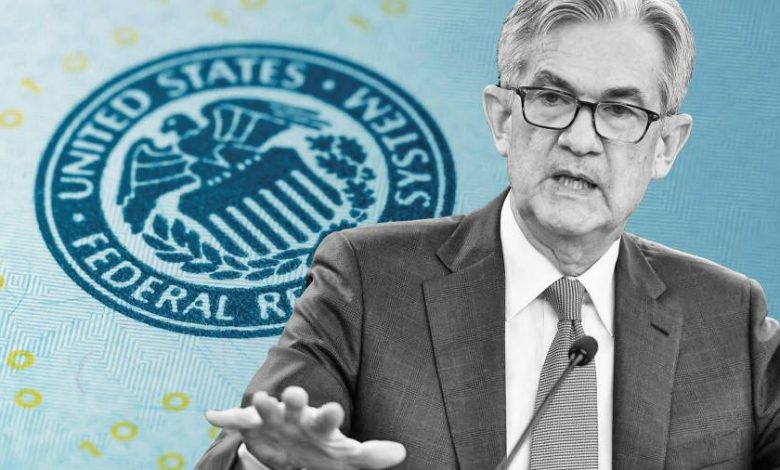Can Jay Powell build consensus at a divided Federal Reserve?

At the start of the pandemic, US central bank officials were united on the need to shore up the world’s largest economy and stave off a financial crisis by slashing interest rates to zero and buying trillions of dollars of assets.
But as the Federal Reserve prepares to unwind that unprecedented monetary support in the face of surging inflation, divisions have emerged among its policymakers over how — and how quickly — to withdraw the stimulus that has been in place for nearly two years.
Minutes from January’s meeting of the Federal Open Market Committee, released on Wednesday, showed that officials agree on one thing: the first US interest rate rise since 2018 will be implemented “soon”, all but guaranteeing an increase in March.
Beyond that, there appears to be little harmony yet on the number, or size, of subsequent interest rate rises.
“It is very telling to me that there is a lot of debate going on across the committee and there is no consensus about the appropriate pace of tightening,” said Blerina Uruci, US economist at T Rowe Price. “It seems very much still up in the air.”
Differences of opinion among officials have played out in public too, as policymakers use speeches and interviews to suggest significantly different approaches to tightening monetary policy.
That has left Jay Powell, acting chair until confirmed for a second term by the Senate, with the tricky task of forging consensus on a committee that is split not only on the pace and size of interest rate rises but also what to do with a balance sheet that has increased to nearly $9tn as a result of the central bank’s pandemic largesse.
“How to thread the needle for a decision-making process that is a bit frayed is a heavy lift,” said Diane Swonk, chief economist at Grant Thornton.
“We won’t only be getting mixed messages from the economy, but the interpretation of those mixed messages from the economy will mean mixed messages from members of the Federal Reserve.”
The US central bank must raise rates to a level that begins to constrain economic activity without choking it off. According to the closely watched “dot plot” projections by FOMC members and branch presidents, last released in December, the magic number is 2.5 per cent.
“The argument now is how quickly to get to neutral,” said Michael Gapen, chief US economist at Barclays, who noted the debate over whether to “front-load” the tightening to more quickly tackle inflation against those who wanted to move more slowly.
The most hawkish intervention this year came from James Bullard, president of the St Louis Fed, who last week said he would support a jumbo half-point rate rise in March or even an increase before next month’s scheduled meeting.

Bullard appeared to withdraw those comments on Monday, saying that he would defer to Powell on such decisions. But his comments nonetheless sparked public pushback from some of his more dovish colleagues, who called for a more cautious approach.
Neel Kashkari, president of the Minneapolis Fed, responded by urging the Fed not to “overdo it” and warned that if the central bank raised rates “really aggressively, we run the risk of slamming the brakes on the economy”.
Patrick Harker, president of the Philadelphia Fed, said the central bank needed to be “methodical” about scaling back the stimulus, echoing comments made by San Francisco’s Mary Daly earlier in the week.
“It is a fact at this point that they cannot guide clearly about what this rate-hiking cycle can look like,” said Matthew Luzzetti, chief US economist at Deutsche Bank. “It does open up the potential for dislocation about what Fed officials expect and what markets price in.”
The Fed’s plans to shrink its balance sheet are also lacking in detail, Luzzetti said. January’s minutes suggested that Fed officials are on board with a “significant reduction”, but no specifics have yet been shared about when that process may begin and at what pace.
There are also “stark differences”, Luzzetti added, about the role that shrinking the balance sheet should play in tightening monetary policy.
Esther George, president of the Kansas City Fed and a voting member on the committee this year, expressed her support this week for the Fed to consider selling assets to try to curb inflation. Cleveland’s Loretta Mester, another voting member, has proposed selling the Fed’s holdings of agency mortgage-backed securities.
The official Fed line is that the balance sheet should be shrunk in a “predictable manner”, chiefly by not reinvesting the proceeds from maturing securities as opposed to selling assets outright.
Some economists, including Swonk and Luzzetti, expect to see more signs of dissent on the balance sheet at forthcoming meetings.
“The balance sheet is a much more heated debate, because there is much more uncertainty about what reducing it will do to the economy,” said Swonk.
Source link





